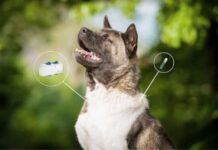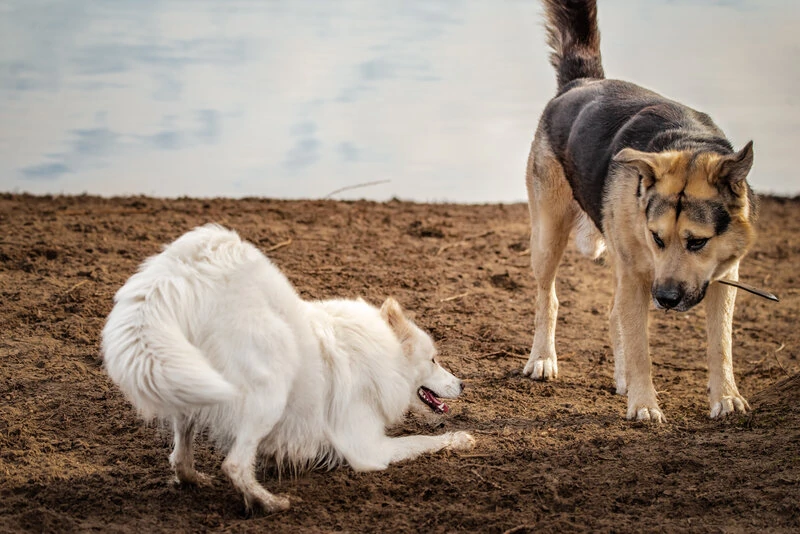
Pets are more than just animals; they are often considered part of the family. Dogs, in particular, have a special place in our hearts due to their loyalty, affectionate nature, and ability to sense and respond to our emotions. As a result, it is essential to understand their needs and behavior to ensure their well-being.
One organization that is dedicated to helping puppies and their owners is Ally Paws. This nonprofit organization aims to improve the lives of dogs and their owners by providing resources and support for various aspects of canine care, including training, nutrition, and health. Their mission is to create a community where pooch owners can access reliable information and support, as well as connect with other puppy owners.
Ally Paws recognizes the importance of understanding a dog’s body language to build a stronger relationship with them. By observing their behavior, canine owners can better understand their dog’s emotions, needs, and preferences. This understanding helps dog owners provide appropriate care and attention to their furry friends and ensures their well-being.
Whether it’s a wagging tail indicating happiness, a tucked tail indicating fear, or a growl indicating aggression, understanding your pup’s body language is essential. By recognizing these signs, canine owners can respond appropriately to their pooch’s needs and prevent any potential conflicts or harm.
Signs of happiness
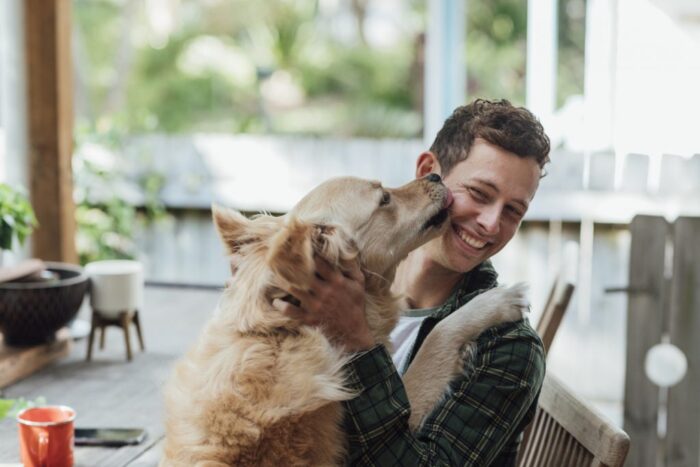
Dogs express happiness in various ways, it’s essential to recognize these signs to ensure their well-being. Some common signs of a happy puppy include a wagging tail, relaxed body posture, and a playful demeanor.
A wagging tail is the most obvious sign of a happy dog. It’s essential to note that not all tail wags mean the same thing. A slow, steady wag may indicate a calm and content dog, while a rapid wag with the whole body moving may indicate excitement or happiness.
A relaxed body posture is another sign of a happy dog. When a hound is happy, their body will be loose, and it will hold its ears in a natural position. Their eyes will also be relaxed, and they may even squint or blink slowly.
A happy dog may also be playful and energetic. They may initiate playtime by bringing you their favorite toy or playfully nipping at your hands. They may also jump up and down or run in circles, indicating their excitement and joy.
Signs of fear
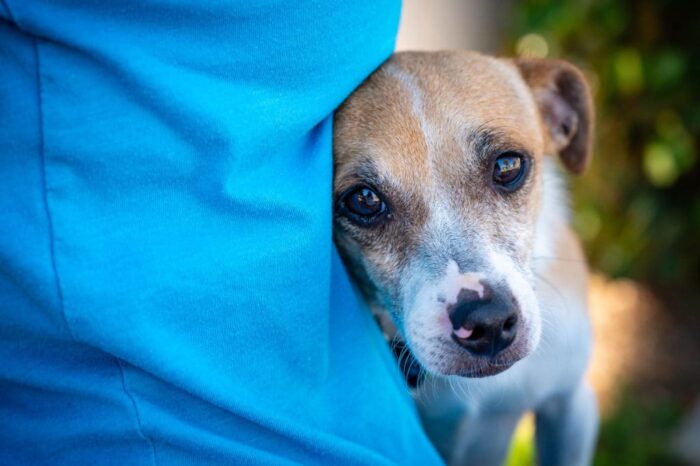
Dogs may exhibit fear when they feel threatened or uncomfortable. The following are some signs that your dog may be fearful:
- Trembling or shaking: Fearful pups may shake or tremble, especially if they feel threatened or anxious.
- Hiding or cowering: Fearful puppies may try to hide or cower in a corner or under furniture.
- Ears and tail: A canine ears may be back, and its tail may be tucked between its legs.
- Avoidance: A fearful pooch may try to avoid eye contact or may turn its head away from the source of its fear.
Signs of aggression
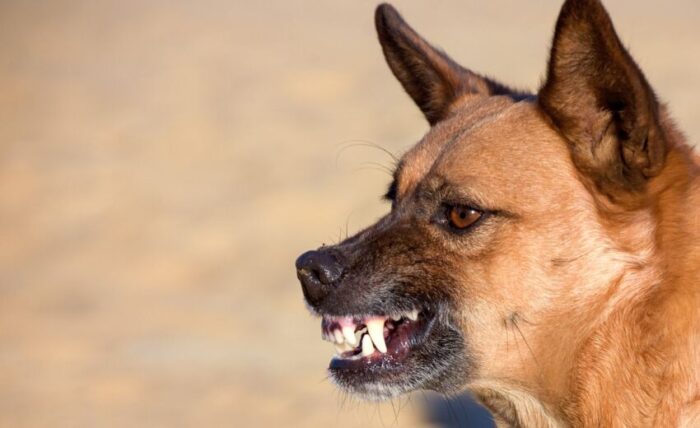
Aggressive behavior in dogs can be concerning and even dangerous, and it’s important to recognize the signs of aggression to prevent potential harm. Some common signs of aggression in puppies include growling, snarling, baring teeth, and lunging.
Growling is one of the most common signs of aggression in puppies. It’s a warning signal that the dog feels threatened or uncomfortable and is communicating their intention to defend itself. Snarling is another sign of aggression, where the canine lifts its lip to show its teeth, indicating that it may be willing to attack.
Baring teeth is a more severe sign of aggression, indicating that the pup is ready to attack. When a puppy bares their teeth, they’re showing its full set of teeth, indicating that it’s willing to defend itself or its territory. It’s important to note that not all canines who bare their teeth are aggressive, and some may do so in a playful manner. However, it’s crucial to understand your dog’s behavior and the context in which they are displaying this behavior.
Lunging is another sign of aggression in pups. When a pup lunges, they move forward abruptly, indicating its intent to attack. This behavior is often accompanied by growling or baring teeth, and it’s crucial to take steps to prevent potential harm when you observe this behavior.
Signs of Stress

Dogs can experience stress for various reasons, including changes in their environment or routine. The following are some signs that your pooch may be stressed:
- Panting: Dogs may pant when they are stressed, especially if they are in a new or unfamiliar environment.
- Excessive grooming: A stressed canine may excessively groom itself, which can lead to hair loss or bald spots.
- Whining or howling: Canines may whine or howl when they are stressed or anxious.
- Decreased appetite: A stressed puppy may have a decreased appetite or may refuse to eat altogether.
Conclusion
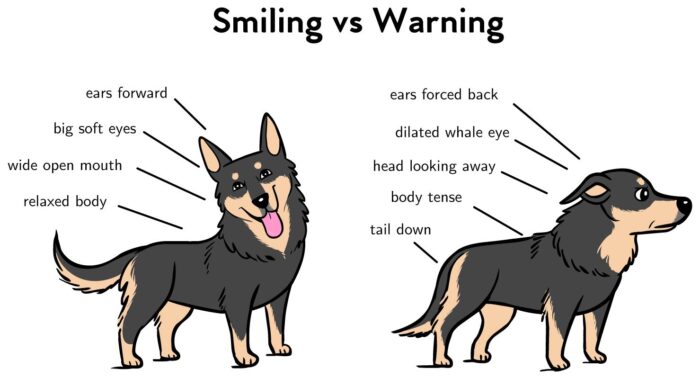
In conclusion, understanding your dog’s body language is crucial for building a strong and healthy relationship with them. Canines communicate primarily through body language, and it is essential to know what their behavior means to ensure you can take care of them appropriately.
Whether it’s signs of happiness, fear, aggression, or stress, recognizing your pooch’s body language can help you understand their emotions and needs. This knowledge can help prevent potential conflicts or harm and ensure your pooch’s well-being.
Additionally, observing your puppy’s body language can help you improve your communication with them. Pups have different personalities, and they may have unique body language cues. By paying attention to your dog’s behavior, you can develop a better understanding of its personality, likes, dislikes, and preferences. This understanding can help you tailor your interactions with your hound, making them feel more comfortable and loved.
Furthermore, understanding your dog’s body language is essential for safety. Aggressive behavior can be dangerous for both canines and humans, and recognizing the signs of aggression in your pooch can help prevent potential harm.
Organizations like Ally Paws are dedicated to helping dog owners improve their puppy well-being and strengthen their bond with their furry friends. They provide resources and support for various aspects of puppy care, including training, nutrition, and health, and recognize the importance of understanding a hound’s body language.
In summary, canines bring joy and love into our lives, and it is essential to understand their body language to ensure their well-being and strengthen our relationship with them. By recognizing the various body language cues, we can communicate with our pooches more effectively, prevent potential conflicts or harm, and create a strong, loving bond with our furry companions.

